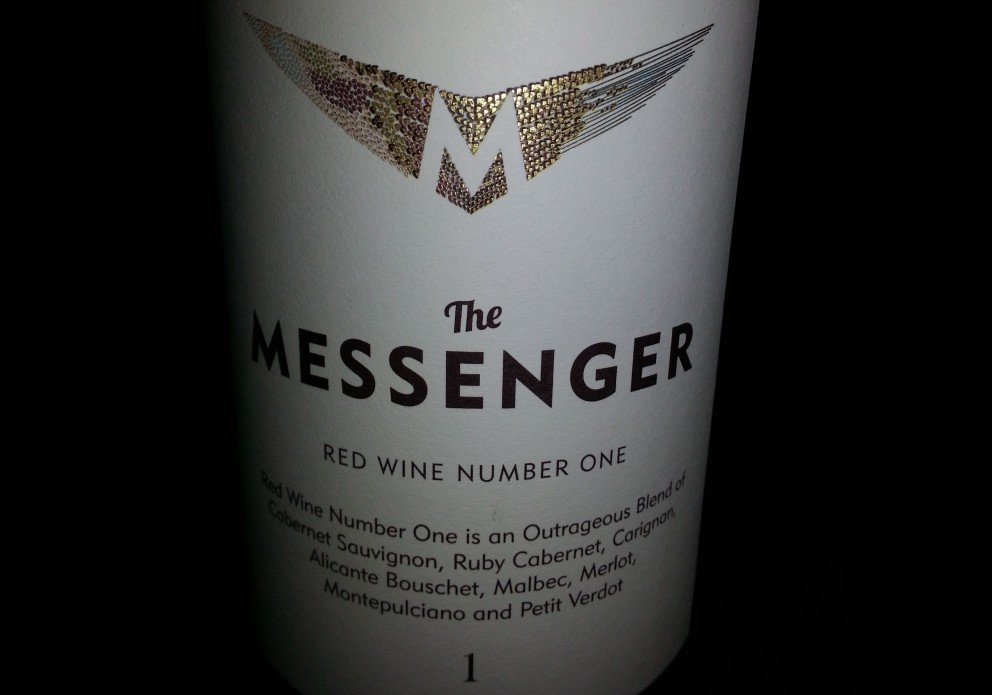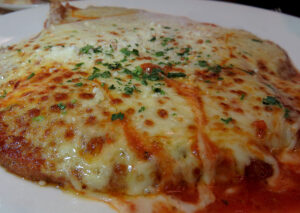As with everything in life it seems, things go in cycles. “Cool” is defined and redefined by trends. Fads come and go. In the ‘60s and ‘70s, people drank Chablis and “pink” Zinfandel, and thought they were the cat’s meow. My college roommates and I would treat ourselves to a classy jug of Almaden ($1.99 in SoCal in the ‘70s) while the rest of the gang resorted to low-brow beer. Then, Chardonnays were big, followed by Merlot (until the movie “Sideways” killed that trend for a while). Social media is now “trending” a movement, idea, or product. As the saying goes, “Everything old is new again.” [I am allowing the faux word “trending” on this site under protest. -ed.]
The trend in the wine world now is red blends. Though blends originated in Bordeaux, people have been drinking “Bordeaux wines” for centuries, perhaps thinking it was a single vintage grape varietal. But the truth is, Bordeaux is one of the world’s oldest blends. Permitted grapes were traditionally Cabernet Sauvignon, Cabernet Franc, Merlot, Petit Verdot, and Malbec. Cabernet Sauvignon usually dominates the blend in red wines produced in the Médoc region of Bordeaux. A typical top-quality Châteaux blend is 70% Cabernet Sauvignon, 15% Cabernet Franc and 15% Merlot. This is referred to as the Bordeaux Blend.
The perception was also that Bordeaux wines were pricey. Because of strict AOC (Appellation d'origine Controlee) rules in Europe, only certain grapes and/or a percentage of grapes are allowed to be in the wine. Low yields of prized grapes not yet transplanted worldwide justified the high price tag. However, in the last few decades, winemakers in California, Chile, and other new-world vineyards have expanded the composition of their own blends. Because the classification rules don’t require it, the grapes and the regions where they came from aren’t even listed on some labels. Sourcing grapes wherever it’s cheap and good keeps the prices of the blends down considerably from their more regulated counterparts.
The other trendy red blend is what’s known as a Super Tuscan. Typically, these wines are made with a combination of Sangiovese, Barbera, Zinfandel, Petit Syrah, Petit Verdot, Cabernet Sauvignon, Syrah, and Primitivo. Think of it as layers of flavors, versus a single flavor. Each grape contributes its characteristic flavor profile, resulting in complex, multi-dimensional, and affordable wines.
Two of our customers’ favorite Bordeaux blends are the Chateau Blouin (Cabernet/Merlot blend offering intense cherries and currant fruits with soft, supple structure); and the Puydeval (58% Cab Franc 28% Syrah 14% Merlot. Spicy aromas of black cherry and blackberry, hints of anise, earthy character. (Located in Teller’s Ripe and Well-Balanced section, at $11.99 and $15.99 respectively, they’re an affordable trend.)
Two of our well-loved California blends are the Messenger Red Number One containing 8 (count ‘em – eight) grapes: Cabernet Sauvignon, Ruby Cab, Carignan, Alicante Bouschet, Malbec, Merlot, Montepulciano and Petit Verdot. This monster blend is full flavored and full bodied. Cedar and tobacco aromas, fresh dark cherry flavors with good depth and concentration. The other is Boz Scaggs, made with organic grapes: 47% Grenache, 32% Mouvedre, 12% Syrah, 9% Counoise. Scaggs Vineyard sits at around 1300 feet in the mild climate and complex soils of Napa Valley’s Mt. Veeder appellation. This Montage has complex aromas of dried flowers, heavy red fruits, dusty violets and spices. Palate is brimming with plum and black cherry. Smooth and velvety on the tongue, stroked by subtle tannins and gentle acids. Old French oak.
Our personal favorite “Super Tuscans” are the Valley of the Moon Blend ’41– Zinfandel, Syrah, Petite Sirah, Barbera, and Sangiovese. This Sonoma expression of a Super Tuscan has lush dark fruit character and rich flavors of berry and plum. Hints of leather and tobacco round out the palate balanced with soft tannins and judicious oak; and If You See Kay (Italy) – Cabernet Sauvignon, Petite Verdot, and Primitivo. Inky black and aromas of crushed blackberry and cassis combined with meaty smokiness. Kay is rich, full and powerful, yet creamy in texture and exquisitely balanced. And let us know if you see her.
Wineries all over the world have strived to make blends in the Bordeaux style. Those producers and negociants in regions lucky enough to have good limestone soil, good grapes and passionate winemakers have perfected Bordeaux-style blends. Good blends will never go out of style . . . what’s new is old again.


































